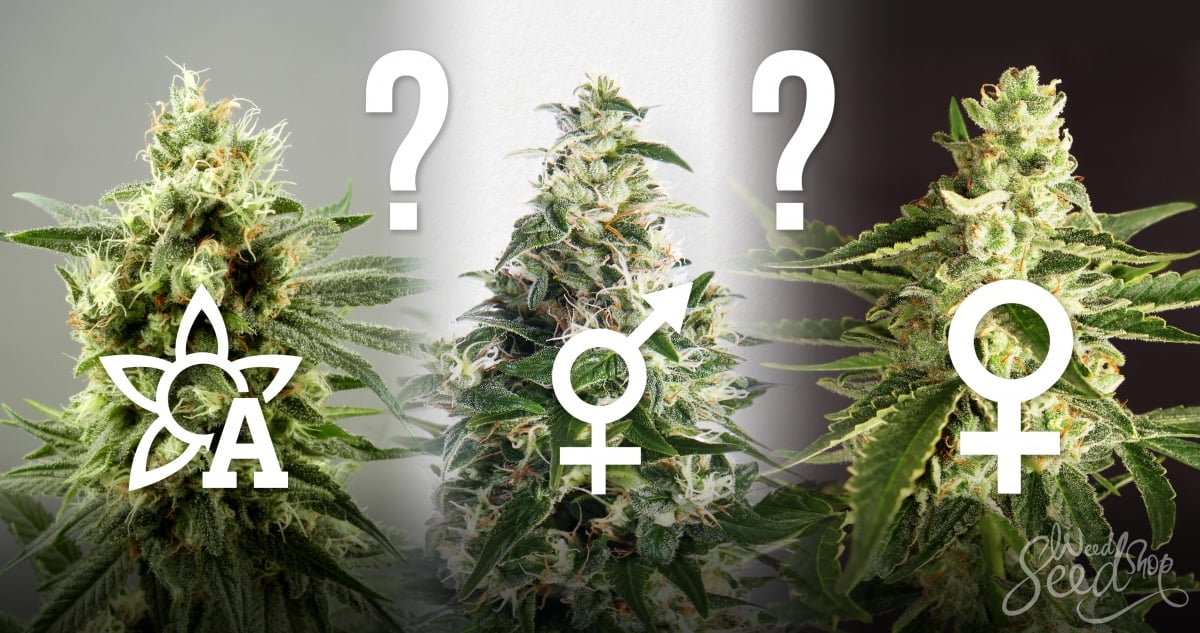

Growing cannabis seeds indoors offers numerous benefits that are hard to ignore. First and foremost, indoor cultivation allows you to have complete control over the growing environment. This means you can manipulate factors like lighting, temperature, humidity, and air circulation to create the perfect conditions for your plants to thrive. Additionally, indoor growing eliminates the need to rely on unpredictable weather conditions, ensuring a consistent and reliable harvest. Moreover, growing cannabis indoors provides you with privacy and security, as well as the ability to grow your favorite strains year-round.
Another advantage of indoor cultivation is the ability to grow a wider range of cannabis strains. Unlike outdoor growing, where climate limitations may restrict your options, indoor growing allows you to experiment with various strains and tailor the growing conditions to meet their specific needs. This opens up a world of possibilities and allows you to explore new and exciting varieties.
Lastly, growing cannabis seeds indoors gives you the opportunity to produce higher-quality yields. By carefully controlling the growing conditions, you can optimize the plant's growth and development, resulting in denser buds, higher THC levels, and better overall potency. Indoor cultivation also allows for closer monitoring of plants, making it easier to detect and address any issues promptly.
Selecting the Right Cannabis Seeds for Indoor Growing.
When it comes to indoor cannabis seeds cultivation, choosing the right seeds is crucial for achieving optimal results. There are various factors to consider when selecting seeds for indoor growing. First and foremost, you'll want to choose strains that are well-suited for indoor cultivation. Look for cannabis seeds strains that are known to be compact, have a shorter flowering time, and exhibit robust growth characteristics.
Additionally, consider the desired effects and flavors of the cannabis seeds you wish to grow. Indica-dominant cannabis seeds strains tend to be more compact and have a shorter flowering time, making them ideal for indoor cultivation. On the other hand, sativa dominant cannabis seeds strains can be taller and may require more vertical space. Consider the space you have available and choose cannabis seeds strains accordingly.
It's also important to source your cannabis seeds from reputable breeders or seed banks to ensure genetic stability and high-quality genetics. Look for reviews and recommendations from experienced growers to help guide your decision-making process. Remember, investing in high-quality cannabis seeds will greatly impact the success of your indoor cannabis seeds cultivation.
Setting Up the Perfect Indoor Grow Room.
To maximize your yield when growing cannabis seeds indoors, it's essential to set up the perfect indoor grow room. Begin by selecting a suitable location in your home that offers privacy, easy access, and adequate space for your plants to grow. Ideally, choose a room that can be easily sealed off to control light leaks and maintain the desired environment.
Next, consider the layout and organization of your grow room. Ensure there is enough space for your plants to grow and for you to move around comfortably. Install reflective surfaces, such as Mylar or white paint, on the walls to maximize light distribution and minimize hotspots. Additionally, invest in a quality ventilation system to ensure proper air circulation and control humidity levels.
When it comes to the flooring, opt for materials that are easy to clean and sanitize, as maintaining cleanliness is crucial for preventing pests and diseases. Consider using a waterproof and non-slip material to avoid any accidental spills or accidents.
To control light exposure and mimic natural sunlight, invest in a high-quality grow light system. LED lights are a popular choice for indoor cannabis cultivation due to their energy efficiency and customizable spectrum. However, other options such as fluorescent or high-pressure sodium (HPS) lights can also be effective. Choose a lighting system that suits your budget, space, and specific requirements.
Creating the perfect environment for your indoor grow room also involves managing temperature and humidity levels. Cannabis plants thrive in temperatures between 70-85°F (21-29°C) during the day and slightly cooler temperatures at night. Invest in a reliable thermometer and hygrometer to monitor these levels accurately. To regulate temperature and humidity, consider using fans, heaters, air conditioners, and dehumidifiers as needed.
By setting up a well-designed and properly equipped indoor grow room, you're setting the stage for successful cannabis cultivation. Remember, attention to detail and consistency are key to maximizing your yield.
Understanding the Light Requirements for Cannabis Seeds.
Light is one of the most critical factors for successful indoor cannabis cultivation. Understanding the light requirements for cannabis seedlings is crucial to ensure healthy growth and maximize your yield.
During the seedling stage, it's essential to provide your cannabis plants with the right amount and quality of light. Seedlings require a lower light intensity compared to mature plants, as excessive light can stress and damage their delicate structure. As a general guideline, provide 16-20 hours of light per day during the seedling stage.
When it comes to light quality, cannabis seedlings thrive under a spectrum that includes both blue and red wavelengths. Blue light promotes compact growth and strong root development, while red light encourages vegetative growth. Full-spectrum LED grow lights are an excellent choice for providing the ideal light spectrum for cannabis seedlings. These lights offer a balance of blue, red, and other wavelengths required for healthy growth.
It's important to position the lights at the right distance from the seedlings to prevent light burn and ensure proper light penetration. As a rule of thumb, maintain a distance of 24-36 inches (60-90 cm) between the lights and the seedlings. As the plants grow, adjust the height of the lights accordingly to maintain the optimal distance.
In addition to providing the right amount and quality of light, it's also crucial to establish a consistent light schedule. Cannabis plants thrive with a consistent light-dark cycle, simulating the natural photoperiod they would experience outdoors. During the vegetative stage, provide 18-24 hours of light followed by 6-12 hours of uninterrupted darkness. This light schedule encourages vigorous vegetative growth.
During the flowering stage, adjust the light schedule to promote bud development. Switch to a 12-12 light-dark cycle, providing 12 hours of light followed by 12 hours of uninterrupted darkness. This change in light schedule triggers the plants' transition from vegetative growth to flower production.
By understanding and meeting the light requirements of cannabis seedlings, you're setting the foundation for healthy growth and maximizing your yield.
Proper Watering and Nutrient Management for Indoor Cannabis Plants.
Proper watering and nutrient management are essential aspects of successful indoor cannabis seeds cultivation. Providing your plants with the right amount and balance of water and nutrients ensures healthy growth and maximizes your yield.
When it comes to watering, it's crucial to find the right balance. Overwatering can lead to root rot and nutrient deficiencies, while underwatering can stunt growth and cause stress. As a general rule of thumb, water your cannabis plants when the top inch (2.5 cm) of the soil feels dry to the touch. Use your finger or a moisture meter to check the soil moisture level before watering.
Ensure proper drainage by using pots with drainage holes and a well-draining growing medium. This allows excess water to escape, preventing waterlogged roots. Avoid overwatering by pouring water slowly and evenly, allowing it to soak into the soil gradually.
Nutrient management is another crucial aspect of indoor cannabis cultivation. Cannabis plants have specific nutrient requirements at different stages of growth. During the vegetative stage, plants require higher levels of nitrogen to promote leafy growth. Transitioning into the flowering stage requires a shift towards higher levels of phosphorus and potassium to support flower development.
Invest in a quality nutrient solution specifically formulated for cannabis cultivation or create your own organic nutrient mix. Follow the manufacturer's instructions for dosage and dilution ratios. Start with a lower concentration and gradually increase as the plants mature.
Monitor your plants for any signs of nutrient deficiencies or excesses, such as yellowing leaves or burnt tips. Adjust your nutrient regimen accordingly to maintain a healthy balance.
Remember, water and nutrient requirements may vary depending on factors such as temperature, humidity, and the specific cannabis seeds strains you're growing. Regularly monitor and adjust your watering and nutrient management practices to meet the evolving needs of your cannabis seeds plants.
Pruning and Training Techniques for Maximizing Yield For Cannabis Seeds.
Pruning and training techniques play a crucial role in maximizing your yield when growing cannabis seeds indoors. By selectively removing certain parts of the plant and manipulating its growth, you can optimize bud production and create a more efficient use of light.
One common pruning technique used in cannabis cultivation is known as "topping." This involves removing the top growth tip of the main stem, encouraging the plant to develop multiple main colas instead of a single dominant one. Topping promotes bushier growth and increases the number of bud sites, ultimately leading to higher yields.
Another popular technique is "LST" or low-stress training. LST involves gently bending and securing the plant's branches to create a more horizontal canopy. This technique allows for better light penetration and distribution, resulting in more even bud development. LST is especially beneficial for strains that tend to grow tall and have a more vertical growth pattern.
"Supercropping" is another technique used to increase yields. This involves gently squeezing and bending the stems to create small stress points, which stimulates the plant to produce more buds. Supercropping can be particularly effective during the vegetative stage when plants are more flexible.
In addition to pruning, using trellises or nets can help support the weight of the developing buds and create a more even canopy. This ensures that all parts of the plant receive adequate light and reduces the risk of bud damage or loss.
When implementing pruning and training techniques, it's important to be mindful of the plant's recovery time and growth patterns. Avoid excessive stress or damage that could hinder overall plant health and development. Regularly monitor your plants and adjust your pruning and training techniques as needed to achieve optimal results.
Preventing and Dealing with Common Pests and Diseases in Indoor Cannabis Seeds Growing.
Pests and diseases can wreak havoc on your indoor cannabis garden if left unaddressed. Preventing and dealing with common pests and diseases is crucial for maintaining healthy plants and maximizing your yield.
One of the most effective ways to prevent pests and diseases is to maintain a clean and sterile grow room. Regularly clean and sanitize all equipment, tools, and surfaces to minimize the risk of contamination. Ensure good air circulation and ventilation to prevent the buildup of excess moisture, which can attract pests and create a favorable environment for fungal diseases.
Monitor your plants regularly for any signs of pest infestations or disease symptoms. Common pests that can affect indoor cannabis cultivation include spider mites, aphids, and fungus gnats. If you detect any pests, consider using biological controls such as predatory insects or beneficial nematodes to naturally eliminate them. Alternatively, there are organic insecticides available that can effectively control pests without harming your plants or the environment.
Fungal diseases such as powdery mildew and bud rot can also be a concern in indoor growing environments. To prevent fungal infections, maintain proper air circulation and humidity levels. Avoid overcrowding your plants and ensure adequate spacing to allow for good airflow. If fungal diseases do occur, remove and destroy affected plant material, and consider using organic fungicides to control the spread.
Regularly inspect your plants for any signs of nutrient deficiencies or imbalances, as these can weaken the plants' immune system and make them more susceptible to pests and diseases. Adjust your nutrient regimen accordingly to maintain optimal plant health.
Lastly, consider implementing IPM (Integrated Pest Management) strategies to prevent and manage pests and diseases. This approach combines various preventative measures, biological controls, and targeted treatments to keep your plants healthy and pest-free.
By staying vigilant, maintaining cleanliness, and promptly addressing any pest or disease issues, you can ensure the health and vitality of your indoor cannabis plants, ultimately maximizing your yield.
Harvesting and Curing Your Indoor-Grown Cannabis Seeds Buds.
Harvesting and curing your indoor-grown cannabis seeds buds at the right time and with the proper techniques is essential for achieving the best quality and maximizing your yield.
Determining the optimal time to harvest your cannabis seeds plants can be a bit of an art. Harvest too early, and your buds may lack potency and yield. Harvest too late, and you risk reduced potency and increased chance of mold or mildew. The key is to observe the trichomes, which are the tiny resin glands on the buds. When the trichomes appear milky or cloudy and some have turned amber, it's a sign that the buds are ripe for harvest.
To harvest your cannabis seeds plants, start by cutting off the main colas or branches using sharp, clean pruning shears. Trim away any excess leaves and hang the branches upside down in a cool, dark, and well-ventilated space. This allows the buds to dry slowly and evenly, preserving their aroma, flavor, and potency.
The drying process typically takes around 7-14 days, depending on factors such as humidity levels and the size of the buds. To ensure proper drying, maintain a humidity level of around 45-55% and a temperature of approximately 60-70°F (15-21°C). Avoid drying the buds too quickly, as this can result in harsh and unpleasant-tasting cannabis.
Once the buds are sufficiently dried, it's time to cure them. Curing involves placing the dried buds in airtight containers, such as glass jars, and allowing them to further develop their flavors and smoothness over time. During the curing process, the remaining moisture in the buds is redistributed, resulting in a more enjoyable smoking or vaping experience.
To cure your buds, place them in the jars, filling them about 75% full. Store the jars in a cool, dark place, away from direct light and heat. Open the jars daily for the first week to release any excess moisture and allow fresh air to circulate


DISCLAIMER: To comply with UK law, Discount Cannabis Seeds sells Cannabis Seeds for souvenir and collection purposes only. Discount Cannabis Seeds accepts no liability for customers purchasing them for any other purposes.

Office Address:
PLEASE NOTE OUR BUSINESS IS ONLINE ONLY, NO SEEDS ARE FOR SALE AT OUR OFFICE ADDRESS
49 Station Road
Polegate
East Sussex
BN26 6EA
Email:
[email protected]
TikTok

Find out about our experience with Trustpilot > DCS & TRUSTPILOT

Discount Cannabis Seeds have been awarded certification by Cannabis Professionals, CannaPro - the trade association for the UK’s cannabis industry.
Copyright © 2024,



